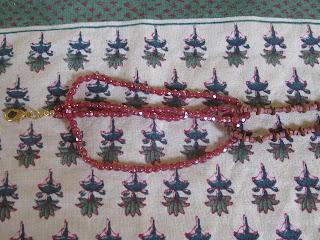How good was The Golem and the Jinni? So good that on the way home from work, I was so engrossed in the book I missed my stop and didn't realize what had happened until I was two towns over. The story, set in New York City in 1899, tells of of two magical creatures who unwittingly come to America and must make sense not only of the new country and its cultures, but of humanity itself. The Golem, created to be someone's wife and widowed shortly after she is awakened, joins the vibrant Jewish community in the Lower East Side. She does not fully understand what she is, and is terrified of her own strength and overwhelmed by the hidden thoughts and desires she senses in everyone. The Jinni, by contrast, is arrogant and self-assured but cannot remember how he was trapped in the proverbial magic bottle for a thousand years. The two meet, and despite their wildly different world views they bond over their shared estrangement from humanity.
The novel is, of course, an exaggerated version of the immigrant experience, and shows how hard it can be to find a community and a sense of belonging. What makes it stand out is the sheer humaneness of the writing. Wecker does not shy away from depicting the prejudices, injustices, and violences that happen when people get together, but she also shows the genuine, unforced goodness people are capable of. I find this to be utterly refreshing in modern literature, which sometimes seems to drown in its own cynicism.
Wecker is reportedly working on a sequel -- yay! -- but until that comes out I will make do with a necklace inspired by the book.
Two strands intertwined was an obvious choice. Jinni are creatures of fire, so for Ahmad's strand I picked faceted glass beads in a beautiful red. Golems are made of clay, so I used clay beads from an old Egyptian beading kit. For a bit of variety I also added cinnamon disks -- especially appropriate since Chava becomes a baker. (I made the disks myself by soaking cinnamon sticks until pliant, using a hole-puncher to cut out the disks, and poking them with a needle before drying.)
I laced the two strands together to make a knot in the middle. I started with the two strands, each pair of ends joined with a bead tip and one half of the clasp:
With the strands "pointed" in the same direction, I place one on top of the other (here the faceted glass under and to the left of the clay):
I picked up the clasp end of the faceted glass and folded it over to the left, placing it under and past the loop at the other end:
I picked up the loop (the center of the faceted glass) and unfolded it to the right, over the clay:
The last step was to pull gently on each end to tighten the knot. There's probably a fancy name for that kind of knot, but I wouldn't know.
It can't hold a candle to Ahmad's intricate jewelry-smithing, but it makes a wonderful reminder of a wonderful book.








No comments:
Post a Comment